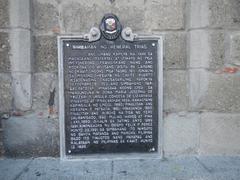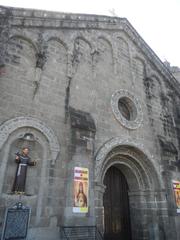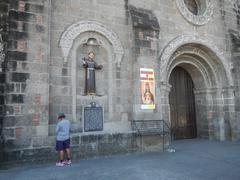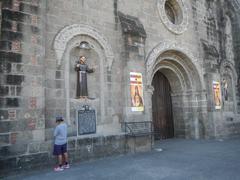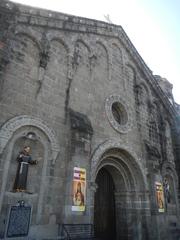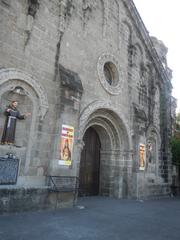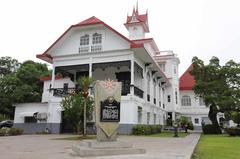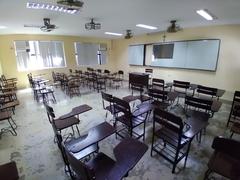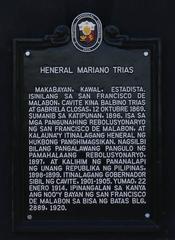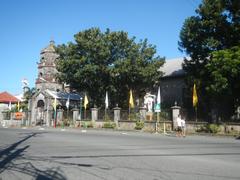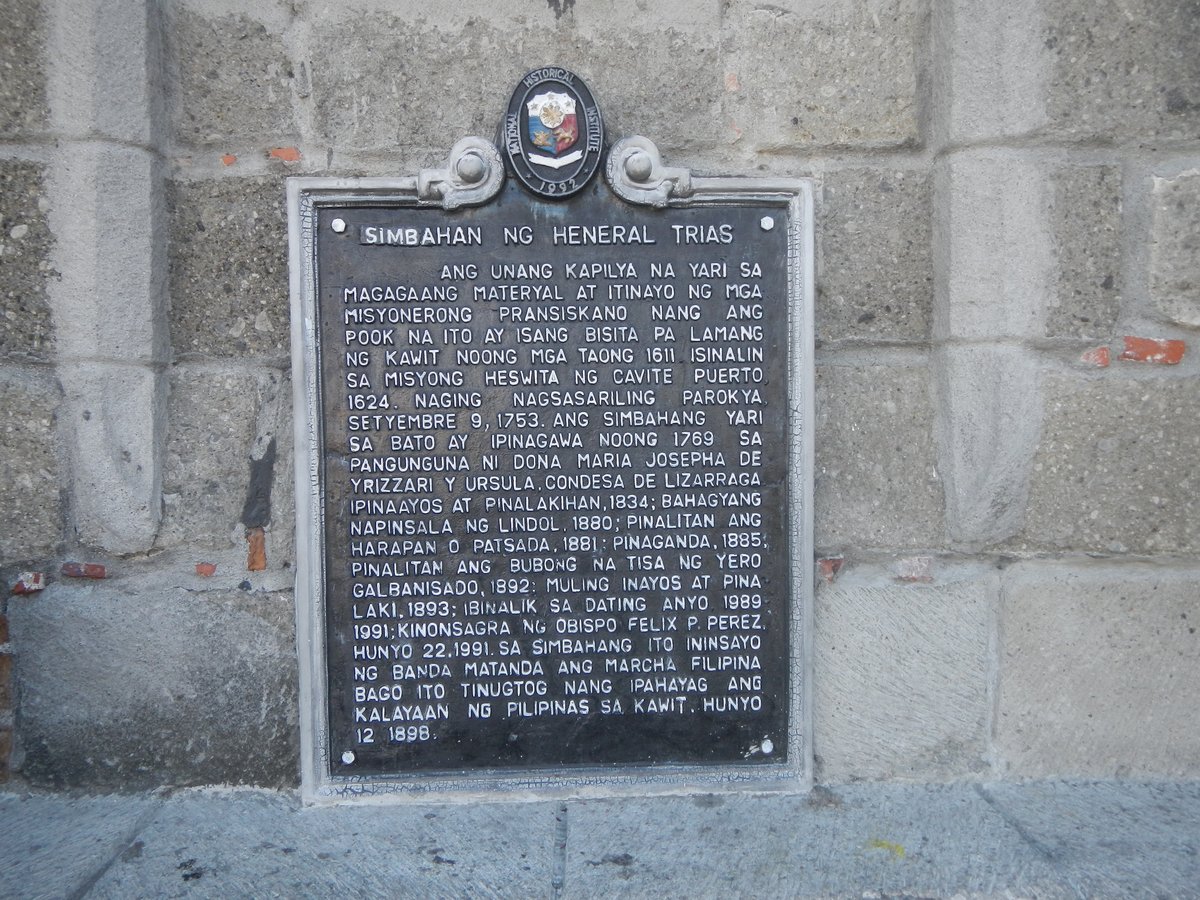
Church of General Trias Historical Marker: Visiting Hours, Tickets, and Travel Guide
Date: 14/06/2025
Introduction
The Church of General Trias, officially named the Saint Francis of Assisi Parish Church, stands as a cornerstone of faith, heritage, and history in Cavite. Founded in the early 17th century, its stone walls have witnessed both the growth of the local community and pivotal moments in Philippine history. This comprehensive guide provides everything you need to know for a meaningful visit—from historical background and cultural significance to practical travel tips, visiting hours, and nearby attractions. Whether you are a pilgrim, history enthusiast, or casual traveler, this landmark offers an enriching and inspiring experience. (Inquirer Opinion, Wikipedia, Scribd: History of General Trias)
Historical Overview and Significance
Foundations and Early Development
The Church of General Trias was established by Franciscan missionaries in 1611 as a sub-parish under Cavite Viejo (now Kawit). The Jesuits assumed administration in 1624, and by September 9, 1753, it became an independent parish. The current stone structure, completed in 1769, reflects classic Spanish colonial architecture with robust adobe walls, arched windows, and a prominent bell tower. The church’s central location in the poblacion made it a hub for religious and civic life, and its design showcases both Filipino artistry and colonial influences. (Wikipedia, bluedreamer27.com)
Revolutionary Role and National Identity
The church is deeply intertwined with the Philippine Revolution. In August 1896, San Francisco de Malabon (now General Trias) became the site of the “First Cry of Cavite,” signaling the start of the revolution against Spanish rule. Revolutionary leaders such as General Mariano Trias and Artemio Ricarte were closely associated with the church, which served as a discreet meeting place for plotting revolutionary activities. The town was later renamed General Trias in 1920 to honor its revolutionary hero and vice president of the First Philippine Republic. (Scribd: History of General Trias, generaltrias.gov.ph)
Cultural and Religious Importance
More than a historical monument, the church remains a vibrant center for religious life. It is dedicated to Saint Francis of Assisi and features a revered altar adorned with statues of saints. The church hosts major feasts, particularly the annual celebration for Saint Francis every October, drawing thousands of devotees and tourists. Its presence in the town plaza cements its role as both a spiritual and cultural nucleus. (SceneZoneSquad)
Architectural and Artistic Features
Colonial Heritage and Restoration
The church exemplifies Spanish colonial ecclesiastical architecture, with semi-Gothic influences and a four-story belfry. Inside, visitors will find wooden pews, intricate ceiling paintings, and a multi-tiered altar showcasing masterful wood carving. Despite damage from earthquakes and age, the church has undergone careful restoration—most notably in 1991—to preserve its historical and artistic integrity. The National Historical Commission of the Philippines declared it a historic structure in 1992. (bluedreamer27.com, bilkenn.com)
The Acacia Tree and Saint Francis Icon
A unique feature is the icon of Saint Francis of Assisi, carved from a century-old acacia tree believed to have been planted by Generals Trias and Ricarte. After the tree was toppled by a typhoon, artisans from Paete, Laguna, transformed the trunk into a 12-foot icon, now housed in a gazebo in front of the church. This symbol bridges the town’s revolutionary past and its enduring faith. (Inquirer Opinion)
Visitor Information
Location and Accessibility
The church is centrally located in the town plaza of General Trias, Cavite, along Sampalucan Street (postal code 4107). It is easily accessible from Metro Manila—about 35 kilometers south—by bus or jeepney. Ample parking is available, though it can get crowded during weekends and festivals. The church grounds are wheelchair accessible, with ramps and seating for visitors with mobility needs.
Visiting Hours
- Regular Schedule: Open daily from 6:00 AM to 7:00 PM.
- Masses: Held throughout the day, with special liturgies on feast days. Check parish bulletins or social media for updated schedules.
Tickets and Fees
- Admission: Free. Donations for maintenance and preservation are welcome but not required.
Guided Tours
- Availability: Guided tours can be arranged through the parish office or local tourism centers, especially during special events and festivals. These tours offer deeper insights into the church’s history and architecture.
Photography
- Photography is generally permitted, but please be respectful during services and avoid flash or intrusive behavior. Always seek permission before photographing clergy or parishioners.
What to See and Experience
Historical Marker
Installed by the National Historical Commission, the marker near the main entrance commemorates the church’s role in the revolution and the Tejeros Convention of 1897. Reading the marker provides context for the site’s historical importance. (Scribd: History of General Trias)
Architectural Details
Admire the thick stone walls, arched windows, wooden altars, and stained-glass windows. The bell tower and gazebo with the acacia icon are popular photographic subjects, especially in the soft light of early morning.
Religious and Cultural Events
Attend the annual feast of Saint Francis of Assisi in October, the Halamanan Festival in February, or the Visita Iglesia pilgrimage during Holy Week for a deeper cultural immersion. (audiala.com, Pinoy Adventurista)
Nearby Attractions
- Aguinaldo Shrine (Kawit): Site of the Philippine Declaration of Independence; a 15-minute drive away. (trek.zone)
- General Trias Heritage Park: Features monuments and exhibits about the city’s revolutionary legacy. (blog.kurby.ai)
- Local Museums and Heritage Houses: Explore Cavite’s rich history further with visits to nearby museums and preserved ancestral homes.
- Town Plaza: Enjoy local snacks or simply relax in the vibrant civic space adjacent to the church.
Travel Tips and Practical Information
- Plan Ahead: Confirm Mass and event schedules before your visit.
- Dress Code: Dress modestly; shoulders and knees should be covered.
- Essentials: Bring water, sun protection, and an umbrella during the dry season.
- Engage Locals: Parish staff are welcoming and eager to share stories about the church’s past.
- Combine Destinations: Explore other historic churches and sites in Cavite for a richer cultural experience.
- Safety: General Trias is safe for tourists, but remain mindful of your belongings in crowded areas.
Frequently Asked Questions (FAQ)
Q: What are the visiting hours of the Church of General Trias?
A: Open daily from 6:00 AM to 7:00 PM. Check for updates during special events.
Q: Is there an entrance fee?
A: No, admission is free; donations are welcome.
Q: Are guided tours available?
A: Yes, through the parish office or local tourism centers.
Q: Is the church wheelchair accessible?
A: Yes, ramps and accessible seating are available.
Q: Can I take photos inside the church?
A: Yes, but respect restrictions during services.
Q: What are the best times to visit?
A: Weekdays and early mornings are less crowded; Holy Week and festivals offer unique cultural experiences.
Q: How do I get there from Manila?
A: Take a bus or jeepney from Baclaran or Coastal Mall to Rosario (Salinas), then transfer to a jeepney bound for General Trias and alight at the plaza.
Visuals and Media
- Façade: The baroque adobe church front, ideal in morning light.
- Acacia Icon: The Saint Francis statue carved from the historic tree.
- Interactive Map: See the church’s location and nearby historical sites.
- Official Photos: Visit the General Trias tourism website for visual resources.
Preservation and Heritage Education
The church’s heritage status is protected by both local and national agencies. Restoration projects and educational programs ensure the preservation of its architecture and promote historical awareness. The historical marker encourages respect and protection for the site among locals and visitors alike.
Contact Information
- Parish Office: For inquiries on tours, Mass schedules, and accessibility.
- Official Websites:
Local tourism offices offer brochures and assistance for heritage tours across Cavite.
Summary and Encouragement to Explore Further
The Church of General Trias is more than a place of worship—it is a living monument to the Filipino spirit, revolutionary history, and enduring faith. Its centuries-old architecture, connection to pivotal national events, and ongoing community role make it a must-visit site in Cavite. With free admission, accessibility, and a wealth of nearby attractions, it promises a rewarding experience for all.
Expand your exploration by visiting neighboring historical sites, participating in local festivals, and supporting community vendors. For more in-depth guides and updates, download the Audiala app and follow local tourism platforms.
Reliable Sources and Further Reading
- The Tree of St. Francis, Philippine Daily Inquirer Opinion
- St. Francis of Assisi Parish Church (General Trias), Wikipedia
- History of General Trias, Scribd
- Revisiting the Saint Francis of Assisi Parish Church in General Trias, Cavite, bluedreamer27.com
- Churches in Cavite to Visit for Visita Iglesia, Pinoy Adventurista
- General Trias Attractions: The 10 Best Tourist Attractions, blog.kurby.ai
- Squad Goals: List of 7 Old Churches in Cavite for Visita Iglesia, SceneZoneSquad
For an enhanced travel experience, download the Audiala app for guided tours and real-time updates on General Trias and other heritage destinations.
